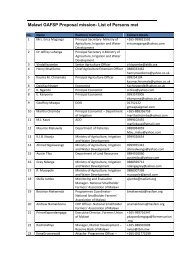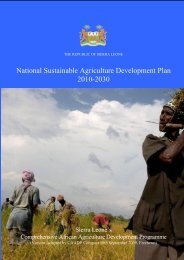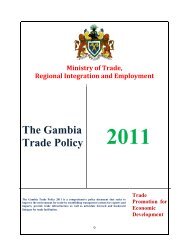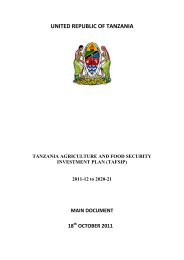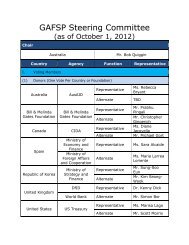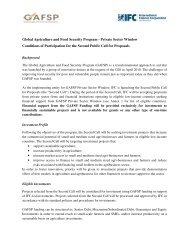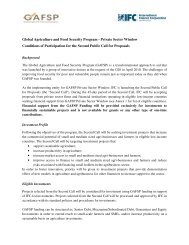Haiti: Poverty Reduction Strategy Paper; IMF Country Report 08/115 ...
Haiti: Poverty Reduction Strategy Paper; IMF Country Report 08/115 ...
Haiti: Poverty Reduction Strategy Paper; IMF Country Report 08/115 ...
You also want an ePaper? Increase the reach of your titles
YUMPU automatically turns print PDFs into web optimized ePapers that Google loves.
Gender, <strong>Poverty</strong>, and Inequality<br />
35 The incidence of extreme poverty in households where a female is the main wage earner (58<br />
percent) is significantly higher than in households where the main wage earner is male (53<br />
percent according to ECVH data). The incidence of extreme poverty is 26 percent among<br />
households where a female is the main wage earner in the metropolitan area, as opposed to 17<br />
percent where the main wage earner is male. In other urban areas, the percentages are as follows:<br />
64 percent among females and 48 percent among males.<br />
36 According to the 2000 Survey on Household Consumption Budgets, almost 48 percent of<br />
consumption inequality is attributable to the gender of the head of household. Average<br />
consumption is therefore much lower for those households where the main wage earner is a<br />
female, and inequalities in the social sphere and in the area of skills seem more marked among<br />
women than men. For the most part, women are in low-skilled professions. They represent a<br />
mere 43.9 percent of persons in intellectual and scientific professions; 36.5 percent in mid-level<br />
professions; and 32.3 percent in administrative positions. The level of education of women is<br />
generally lower than that of men, which explains in part their more unfavorable position in the<br />
employment market.<br />
37 Almost 40 percent of the population age 10 and over is illiterate (IHSI 2003). This is the case of<br />
42 percent of women versus 36 percent of men. Disparities between the sexes are lower at the<br />
primary level but become more pronounced at the higher educational levels. At the moment,<br />
boys spend more time in school than girls during the first two cycles. The duration of time spent<br />
in school by girls is two years and eight months compared to a general average of three years and<br />
nine months.<br />
Education and <strong>Poverty</strong><br />
38 The education system in <strong>Haiti</strong> is a highly exclusionary one that contributes to the perpetuation<br />
and reinforcement of inequalities through limited access to schools, particularly in rural areas,<br />
and differences in the quality of schools, the result being that generally, poorer children have<br />
access to low-quality education only and the cost of education is relatively high in relation to the<br />
income of families, who cover most of their educational expenses. Only 21.5 percent of the<br />
population age five and over will be educated at the secondary level and barely 1.1 percent at the<br />
university level (1.4 percent for men against 0.7 percent for women).<br />
39 At the moment, almost one-third of children between the ages of six and twelve (500,000<br />
children) do not attend school. This percentage climbs to 40 percent for the five to fifteen age<br />
group (approximately one million children). The dropout rate is particularly high in the first basic<br />
cycle (29 percent). Close to 60 percent of children drop out of school before receiving their<br />
primary education certificate. Of the two million children enrolled in the basic level, only 56<br />
percent are at the required age for the first cycle (ages six to eleven).<br />
40 Most schools do not have adequate facilities and are under-equipped. According to the 2003<br />
school survey, five percent of schools are housed in a church or an open-air shaded area. Some<br />
58 percent do not have toilets and 23 percent have no running water. This situation is highly<br />
prejudicial to girls. In addition, only 36 percent of schools have libraries. The vast majority of<br />
workers (80 percent) do not meet the existing criteria for the selection of training programs or are<br />
not accepted in these programs because of the lack of space in professional schools. Only 6 of<br />
every 1,000 workers on the labor market have a diploma or certificate in a technical or<br />
professional field.<br />
22





